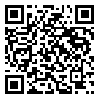Volume 12, Issue 4 (2-2024)
2024, 12(4): 15-30 |
Back to browse issues page
Download citation:
BibTeX | RIS | EndNote | Medlars | ProCite | Reference Manager | RefWorks
Send citation to:



BibTeX | RIS | EndNote | Medlars | ProCite | Reference Manager | RefWorks
Send citation to:
Almasieh K, Cheraghi M. Modeling of Habitat Corridor Hotspots for the Mustelid Species (Mustelidae) and Their Coverage by Conservation Areas in Iran. Iranian Journal of Applied Ecology 2024; 12 (4) :15-30
URL: http://ijae.iut.ac.ir/article-1-1202-en.html
URL: http://ijae.iut.ac.ir/article-1-1202-en.html
Agricultural Sciences and Natural Resources University of Khuzestan
Abstract: (3761 Views)
Conservation of habitat corridors is important in order to reduce the impacts of habitat fragmentation on wildlife. The present study aimed to identify the potential habitat corridors between habitat patches of this family using factorial least-cost path analysis and UNICOR software. By overlaying the habitat corridors of the mustelidae family, the study examined the coverage of the habitat corridor hotspots with the conservation areas designated by the Department of Environment of Iran, as well as the road density within these hotspots. The results revealed that the largest habitat corridors were associated with weasel, stone marten, and marbled polecat species. Habitat corridor hotspots of the mustelid species are mainly located in the Zagros and Alborz mountains. The coverage of habitat corridor hotspots with conservation areas was less than 25%, and the road density was about 50 m/km2. It is necessary to consider the habitat corridor hotspots of the mustelids when creating new conservation areas and implementing measures to minimize road-related losses in these hotspots. The conservation of the mustelidae family as mesocarnivorous species ensures the survival of wildlife food webs and contributes to the sustainability of Iran's biodiversity.
Keywords: Habitat corridor, Factorial least-cost path, Habitat fragmentation, Zagros and Alborz, Mesocarnivores
Send email to the article author
| Rights and permissions | |
 | This work is licensed under a Creative Commons Attribution-NonCommercial 4.0 International License. |






